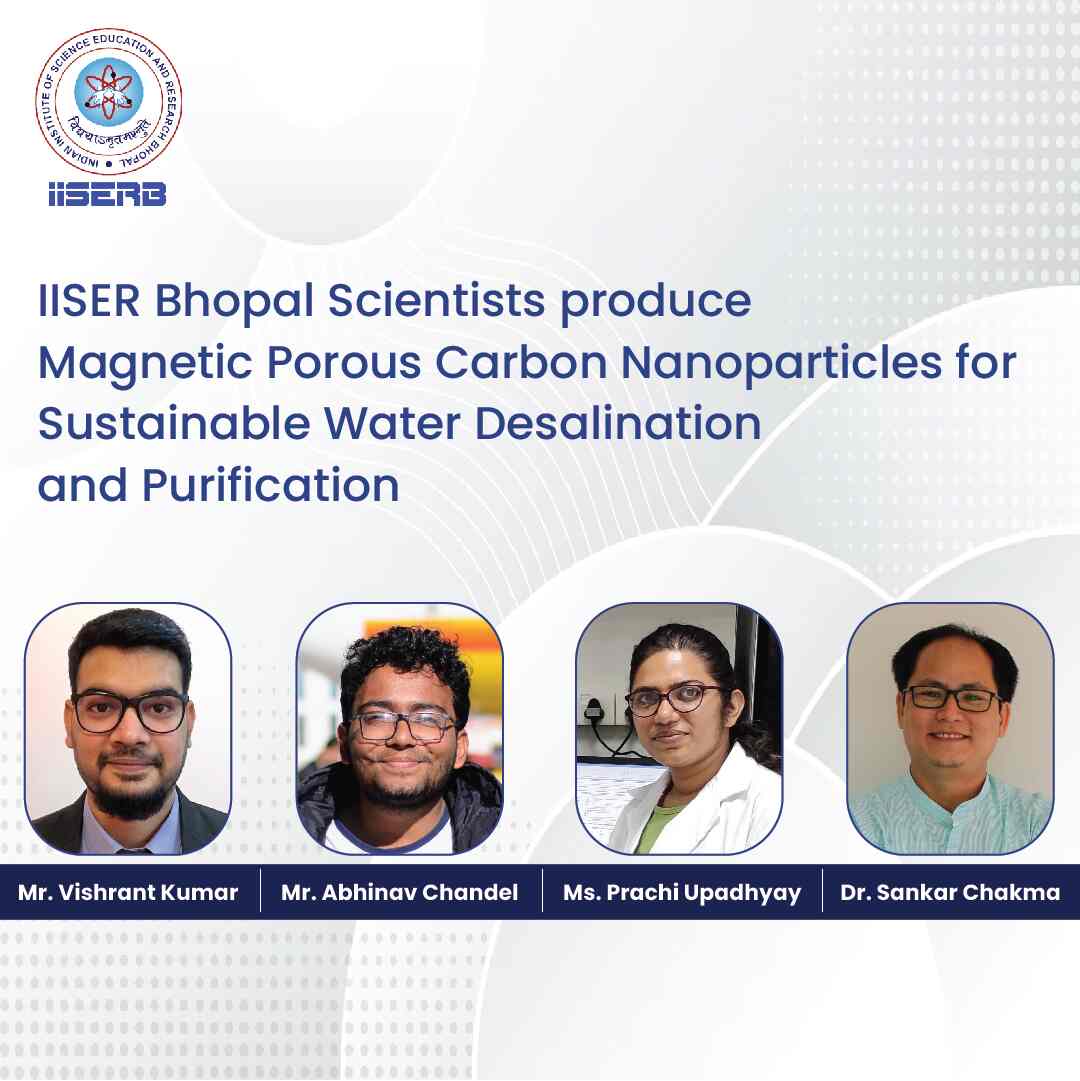Tiny Nanoparticles Hold Big Promise for Sustainable Water Solutions
Researchers at the Indian Institute of Science Education and Research Bhopal (IISER) have achieved a significant breakthrough by successfully producing magnetic nanoparticles, which are minuscule particles approximately one hundred thousand times smaller than the width of a human hair.
These innovative nanoparticles have been engineered for a range of applications, including the heat and light-induced removal of salt from seawater, the extraction of potable water from wastewater contaminated with dyes, and deicing and anti-icing processes.
The critical global challenge of obtaining clean and usable freshwater from sources like wastewater and seawater is being addressed through advancements in desalination. Desalination methods, which can provide local water sources for about 40% of coastal communities, typically involve energy-intensive processes like distillation or reverse osmosis. However, IISER’s sustainable alternative is photothermal-assisted desalination, harnessing renewable solar energy.
The creation of these magnetic nanoparticles offers hope for a future where clean and safe water is more readily available to communities worldwide, particularly in regions facing water scarcity issues.
The groundbreaking research was led by Dr. Sankar Chakma, Assistant Professor in the Department of Chemical Engineering at IISER Bhopal, and the findings have been published in the renowned peer-reviewed journal “American Chemical Society – EST Engineering.” The paper was co-authored by Vishrant Kumar, Abhinav Chandel, Prachi Upadhyay, and Dr. Sankar Chakma. You can access the full paper at https://doi.org/10.1021/acsestengg.3c00297.
Dr. Sankar Chakma, the lead researcher, explained the significance of their research, stating, “The photothermal desalination using our magnetic nanoparticles was effective with an excellent water evaporation rate. This is because of improved mass transfer through a porous medium, like transpiration and capillary action, aiding faster upward movement of water molecules.”
The technical aspects of their experiments were discussed by Dr. Sankar Chakma, who highlighted, “Porous magnetic carbon materials are excellent for photothermal applications because they interact with light waves in unique ways. The interaction is more effective with highly porous materials, as they offer additional pathways for waves to bounce around and be absorbed.”
What makes this research even more intriguing is the simple method used to produce these magnetic Porous Carbon Nanoparticles, inspired by Indian earthen lamps. The process involved saturating cotton with nickel salt and mustard oil, and igniting it using a lighter, resulting in the formation of these specialized MNPs. The study further demonstrated the ability of these nanoparticles to completely remove dye molecules from water when exposed to light and heat, as well as their capacity to absorb Near-Infrared radiation from their environment, enabling effective de-icing properties as they heat up.
This research represents a major leap forward in the quest for sustainable and accessible water resources, addressing a global need for clean and usable freshwater.


